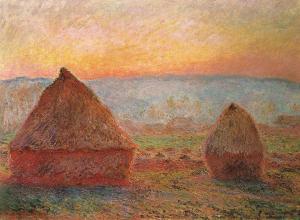Each kit typically comes equipped with brushes, individually labelled, tiny tubs of paint, and a canvas etched with lines and small numbers that make up a colorless, pre-determined design. The painter is to then fill in the lines— like those of a coloring book— but with specified colors, either directly from the tubs or from mixing two to create a new hue.
The original 1950s kits were developed by Max S. Klein, owner of Palmer Paint Company in Detroit, Michigan. Wanting to perfect the prototype, Klein sought after Dan Robbins, a commercial artist with a passion for all things paint. Before moving to Palmer Paint, Robbins worked for major automobile companies— like General Motors and Chevrolet— specifically in the art departments.
Though Robbins formally coined the paint by number invention, he credits Leonardo da Vinci for the inspiration. Da Vinci used a like-minded method when training his apprentices. He would issue them a canvas covered with numbered squares, on which he had drawn lines in varying directions. The apprentice would then fill in the angular shapes with different colors indicated by da Vinci, before proceeding to paint the remainder.




























